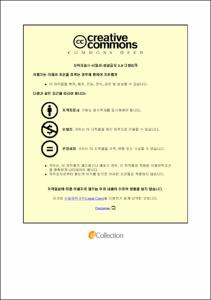성인 이관의 형태학적 연구 : 사람 사체 연구
- Abstract
- 목표 : 이관 기능 장애를 개선하기 위하여 비인강이나 중이강을 통해 이관에 직접적인 시술이나 수술을 통한 치료 방식들이 다양하게 개발되고 있다. 본 연구는 사람의 냉동 사체에서 이관의 형태를 분석하기 위하여 고안 되었다.
방법: 이관의 구성을 확인하기 위해 사람의 냉동 사체의 14귀가 분석되었다. 사체의 머리는 비강 중격과 평행한 시상 면으로 절단되어 우측과 좌측으로 나누었다. 분석에 사용한 모든 귀는 개방성 유양동 절제술을 통해 중이강 내 이관의 개방성을 확인하였다. 200-µL 피펫의 팁과 연결된 10cc 주사기를 사용하여 실리콘 제재를 비인두강의 이관 입구를 통해 이관의 내부에 주입하였다. 이관에 채워진 실리콘을 경화 시킨 뒤 이관에서 분리하기 전에 비인두 입구부의 경계와 방향(상하, 전후)을 표시하였다. 3D CT를 사용하여 전체 이관의 실리콘 모형의 부피와 형태, 길이 정보를 분석하였다. 또한 이관 풍선이나 카테터가 주로 삽입되는 부위인 비인두 입구부에서 20mm되는 지점까지의 이관 내관의 모양과 단면적 길이도 확인하였다.
결과: 이관은 비인두 입구부에서 협부까지 점차 좁아지면서 곡선의 형태를 보였으며 내관의 전방부는 오목하고 후방부는 볼록한 면을 보였다. 이관의 단면부에서 확인된 가장 확장된 부분은 이관의 하방부 였으며, 확장되지 않은 상방부는 실리콘 주입 압력에 따라 내관의 폭이 변하지 않았다. 이관 실리콘 모형의 평균 부피는 1.4 ± 0.5 ml (최소: 0.7, 최대: 2.5)였다. 오목한 전방면의 길이는 26.3 ± 3.4mm (최소: 21.4, 최대 : 32.2)를 보였고, 볼록한 후방면의 전체 길이는 30.5 ± 3.6mm (최소: 25.3, 최대: 36.6)를 보였다. 비인두 입구부에 가장 넓은 이관 단면의 높이는 10.1 ± 0.9 mm (최소: 8.9, 최대: 11.9), 너비는 8.0 ± 1.5 mm (최소: 6.1, 최대: 11.0)였다. 이관의 협부 근처 단면의 높이는 2.4 ± 0.4 mm (최소: 1.8, 최대: 3.2) 이고 너비는 1.3 ± 0.5 mm (최소: 0.6, 최대: 1.9) 였다. 비인두 입구부에서 20mm되는 지점까지의 내관 단면은 전반적으로 상부가 좁고, 하부가 넓은 아몬드 모양의 형태를 보였으며, 비인두 입구에서 멀어질수록 폭이 좁은 기다란 형태로 보였다. 비인두에서 5mm 지점 에서는 높이 8.37mm, 너비5.33mm를 보였으며, 10mm 지점에서는 높이와 너비가 각각 7.02mm, 3.46mm, 15mm지점에서는 5.96 mm, 2.65mm를 보였다. 비인두에서 20mm 떨어진 지점의 내관 높이와 너비는 각각 5.51mm과 1.94mm였다.
결론: 이관 기능 장애를 치료하기 위해 이관 풍선 확장술이나 스텐트 삽입술 등과 같이 이관을 직접 확장하는 치료들이 주목받고 있으며, 효과적인 이관의 확장을 위해서는 이관의 형태, 크기, 확장 기구의 삽입 위치와 그 범위 등에 대한 정확한 정보가 필요하다. 본 연구에서 확인한 이관의 부피, 형태에 대한 해부학적 정보는 적합한 이관 수술의 재료 개발에 기여할 수 있다.
|Objectives: Various methods to evaluate the anatomical configuration for the Eustachian tube (E-tube) have been attempted. This study aimed to evaluate the E-tube configuration in human fresh cadavers.
Methods: Fourteen ears of human cadavers were used to identify the configuration of the E-tube. The cadaver head was cut in the sagittal plane parallel to the nasal septum, dividing it into right and left sides. Using a 10 ml syringe connected to a 200-µL pipette tip, impression material was filled inside the E-tube through the nasopharyngeal orifice. The blue impression material was identified through the tympanic cavity. The impression material in the E-tube was cured in the refrigerator for 6 hours. Before taking the impression material out of the E-tube, the superior and the anterior part of the impression at the level of the nasopharyngeal ostium (NO) were marked. The volume and length of the impression were measured using 3D CT imaging. The shape and cross-sectional dimension of the E-tube from the nasopharyngeal ostium to 20 mm, where the ear canal balloon or catheter is commonly inserted, was also analyzed.
Results: The E-tube narrowed from the NO to the isthmus. The E-tube surface was concave anteriorly and convex posteriorly. The most dilated portion was the lower portion of the E-tube, and it had an upper ridge along the tubal passage. The average volume of the E-tube impression was 1.4 ± 0.5 ml (min: 0.7, max: 2.5). The total length of the convex side was 30.5 ± 3.6 mm (min: 25.3, max: 36.6) and that of the concave side was 26.3 ± 3.4 mm (min: 21.4, max: 32.2). The widest E-tube area near the NO presented 10.1 ± 0.9 mm (min: 8.9, max: 11.9) in height, and 8.0 ± 1.5 mm (min: 6.1, max: 11.0) in width. The medial end near the E-tube pre-isthmus was 2.4 ± 0.4 mm (min: 1.8, max: 3.2) in height, and 1.3 ± 0.5 mm (min: 0.6, max: 1.9) in width. The cross-section of the E-tube from the NO to 20 mm was observed generally narrow in the upper part and wide in the lower part. At 5 mm from the NO, the height and width were 8.37 mm and 5.33 mm, respectively. The height and width of the E-tube at 20 mm from the NO were 5.51 mm and 1.94 mm, respectively.
Conclusion: E-tube dilatation is a promising technique, and various attempts have been made to analyze the configuration of E-tube regarding size, shape, and dilatation range. Anatomical configuration on the volume and morphology of the E-tube from this study can contribute to developing the most suitable E-tube balloon catheter and stent for dilatation.
- Issued Date
- 2021
- Awarded Date
- 2021-02
- Type
- Dissertation
- Alternative Author(s)
- Min Young Kwak
- Affiliation
- 울산대학교
- Department
- 일반대학원 의학과
- Advisor
- 강우석
- Degree
- Master
- Publisher
- 울산대학교 일반대학원 의학과
- Language
- eng
- Rights
- 울산대학교 논문은 저작권에 의해 보호받습니다.
- Appears in Collections:
- Medicine > 1. Theses (Master)
- 파일 목록
-
-
Download
 200000364326.pdf
기타 데이터 / 1.2 MB / Adobe PDF
200000364326.pdf
기타 데이터 / 1.2 MB / Adobe PDF
-
Items in Repository are protected by copyright, with all rights reserved, unless otherwise indicated.